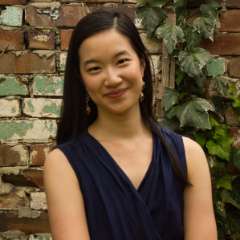Opera Australia has served up its current production of La traviata for, astonishingly, almost thirty years – and it's easy to see why. Directed by the late Elijah Moshinsky (and revived by Warwick Doddrell), it’s a traditional, well-crafted chocolate sampler box of an opera, designed to provide a pleasing and easily ingested night out.
Its great strength is its lavish Belle Époque setting. Michael Yeargan’s sets boast a no-expenses-spared attention to detail, with the Act 1 and 2 salons so richly decked you can almost hear the velvet chatting across the pearls to the brocade. His sets are cleverly designed to hint at a larger, bustling society outside. There are expressively-angled corridors, hints of antechambers and dining rooms hidden behind drapery and grilles, unseen front gardens, and a portion of a giant skylight (Nigel Levings’ lighting design) by which we catch glimpses of ornate gilt stencilling. Peter J Hall’s costumes are equally beautiful, using rich jewel-toned fabrics edged in lashings of fine jewellery. Moshinsky's team were reportedly inspired by Impressionist artwork, and that textured, vivid aesthetic covers the whole performance in a romantic painterly sheen.
So far, so good. The production, though, needs a charismatic and well-matched cast to rise above mere confectionary status, and I’m not sure the chemistry quite got there. Our Violetta was sung by the Russian soprano Irina Lungu. Her Violetta is a glamorous creature who wears a performative façade as shiny as her pearls, a coquettish mask seemingly constructed from years of experience and necessity. There was even one moment in Act 1 when, caught in her first passionate embrace with Alfredo, she seems to break the fourth wall and wink at the audience. It’s a different interpretation from Opera Australia favourite Stacey Alleume’s warm and natural Violetta (in July's casting), but will please audiences who like their soprano arias served with diva glitter on the side. Lungu leans into showing off an almost knowingly flamboyant coloratura, which perhaps explains why her vibrato became a bit too wide for my liking at times, sometimes veering into shaking jaw territory. However, she has a mature ease with the role borne from a lot of experience, and a wonderful power at the top and bottom ends of her range – the high notes were clean and assured firecrackers of sound.
Opening night’s Alfredo was the Melbourne tenor Tomas Dalton, a last-minute replacement for Ji-Min Park. Dalton has a smooth, gently mellow voice and characterised Alfredo as a baby-faced, lovesick puppy – one got the impression of a wide-eyed private school boy who’d only recently learnt to shave. There were pitching issues throughout, but Dalton deserves credit for stepping into a big role at the last minute. We got a glimpse of his full theatrical capacity in the Act 2 finale, when his father’s reproach sends him into a tailspin. I would have liked to witness more of Dalton at that emotional dial, and look forward to seeing him channel that capacity in future performances.
The real standout for me was the Western Australian baritone Luke Gabbedy, as Giorgio Germont. He sung with a penetrating brightness to his vocal resonance, had an enunciation that was refreshingly clear but never overdone, and his phrasing demonstrated an assured understanding of Germont’s arias. Gabbedy was a good theatrical match for Lungu (more equal in energy than Dalton), and their duet “Morrò! La mia memoria” was a plaintively poignant high point.
Opera Australia often cast supporting roles very well, and this Traviata was no exception. Celeste Haworth reprised Flora with her usual handsome singing and stage charm, backed by very fine vocal and theatrical performances from Iain Henderson, Alexander Sefton and Andrew Moran (Gastone, Baron Douphol, and the Marquis d’Obigny respectively). Danita Weatherstone, Richard Anderson, Jin Tea Kim, Jonathan McCauley and Malcolm Ede were all noticeably good as the supporting “downstairs” cast of the lady’s maid Annina, Dr Grenvil, Giuseppe, and the messenger and servant.
The Opera Australia chorus were also a highlight. Musically on form, they seemed to be having the time of their lives (especially in Act 2’s witty tambourine dance) and charmed their way through every act – they made you really want to join the party. A final shoutout goes to the Opera Australia Orchestra under Tahu Mattheson’s baton. The upper strings sounded unusually thin at times, but were balanced by wonderfully mellow lower strings and brass.
All in all, this is a very handsome, pleasant night at the opera. While not everyone can feel satisfied on sampler chocolates alone (no matter how nice the packaging), it will gratify audiences looking for that familiar, traditional operatic fix.




